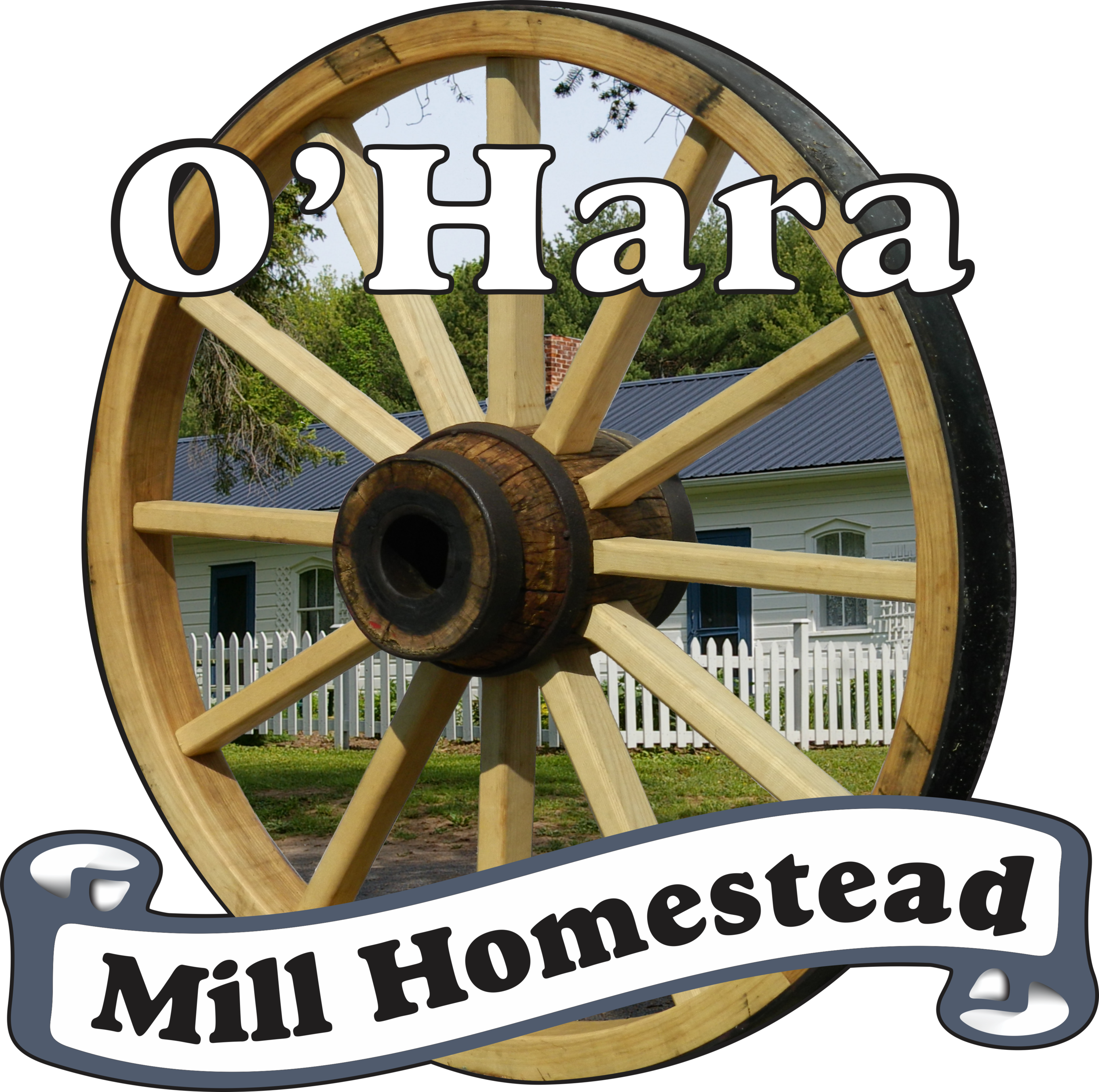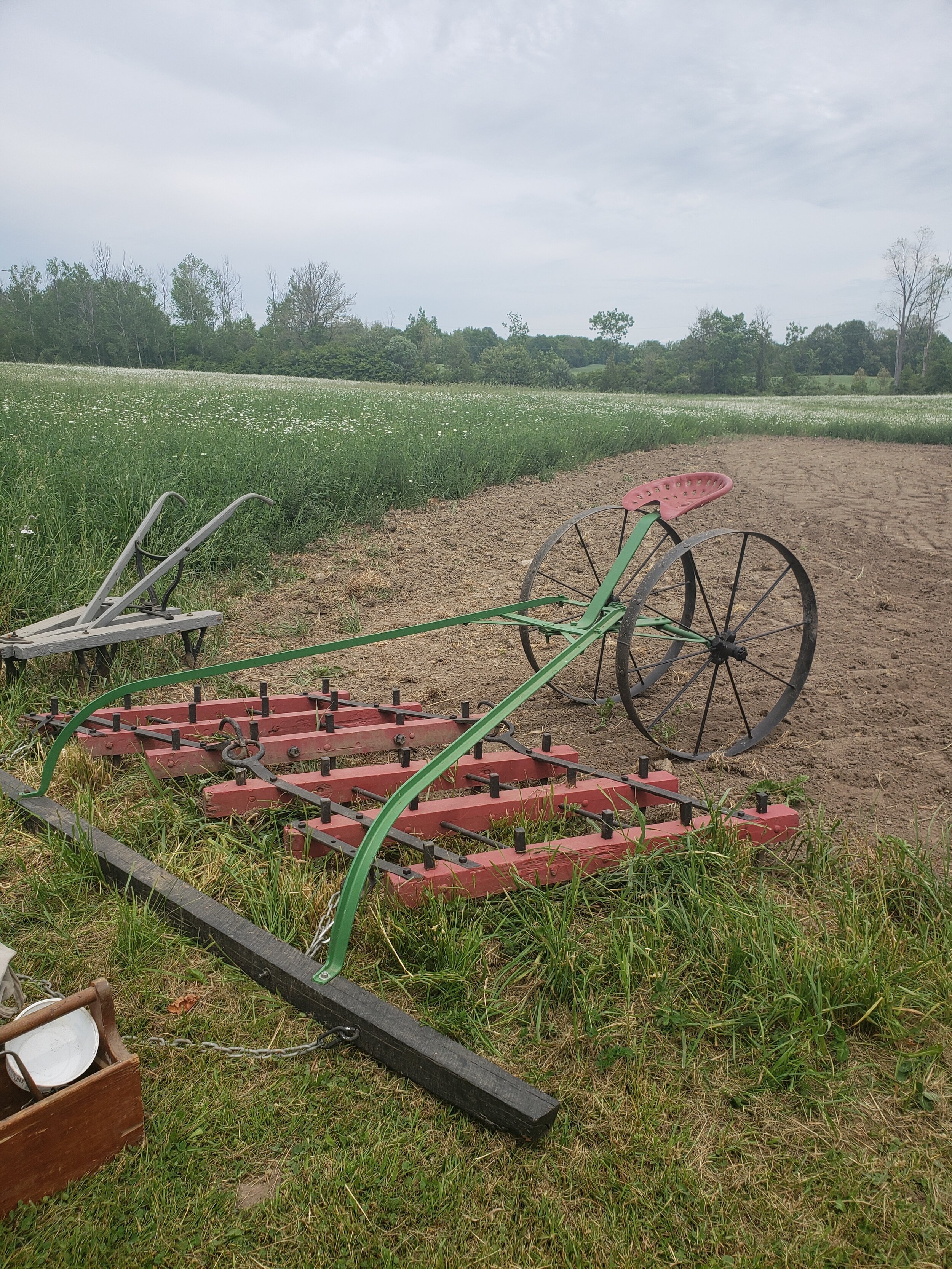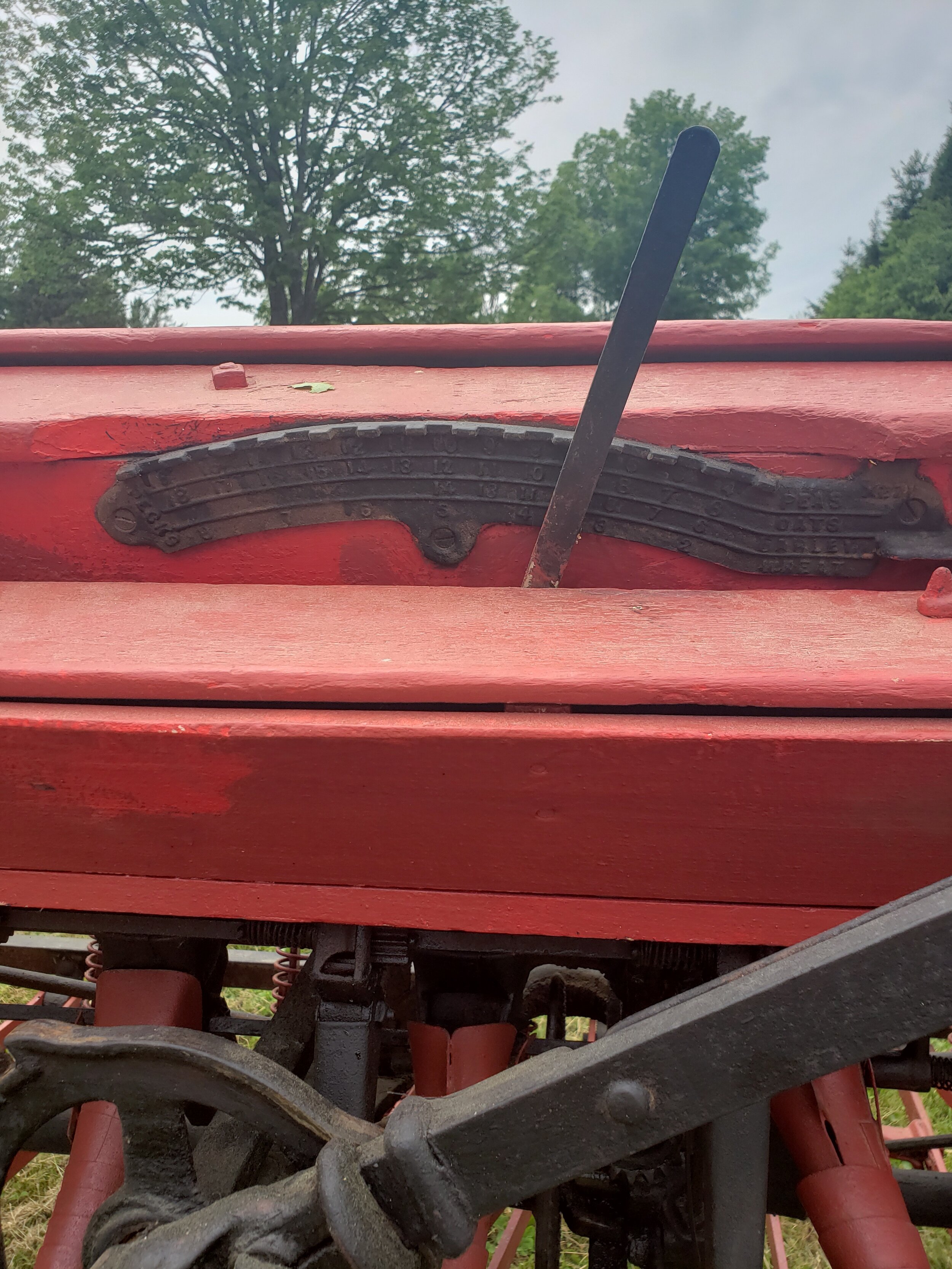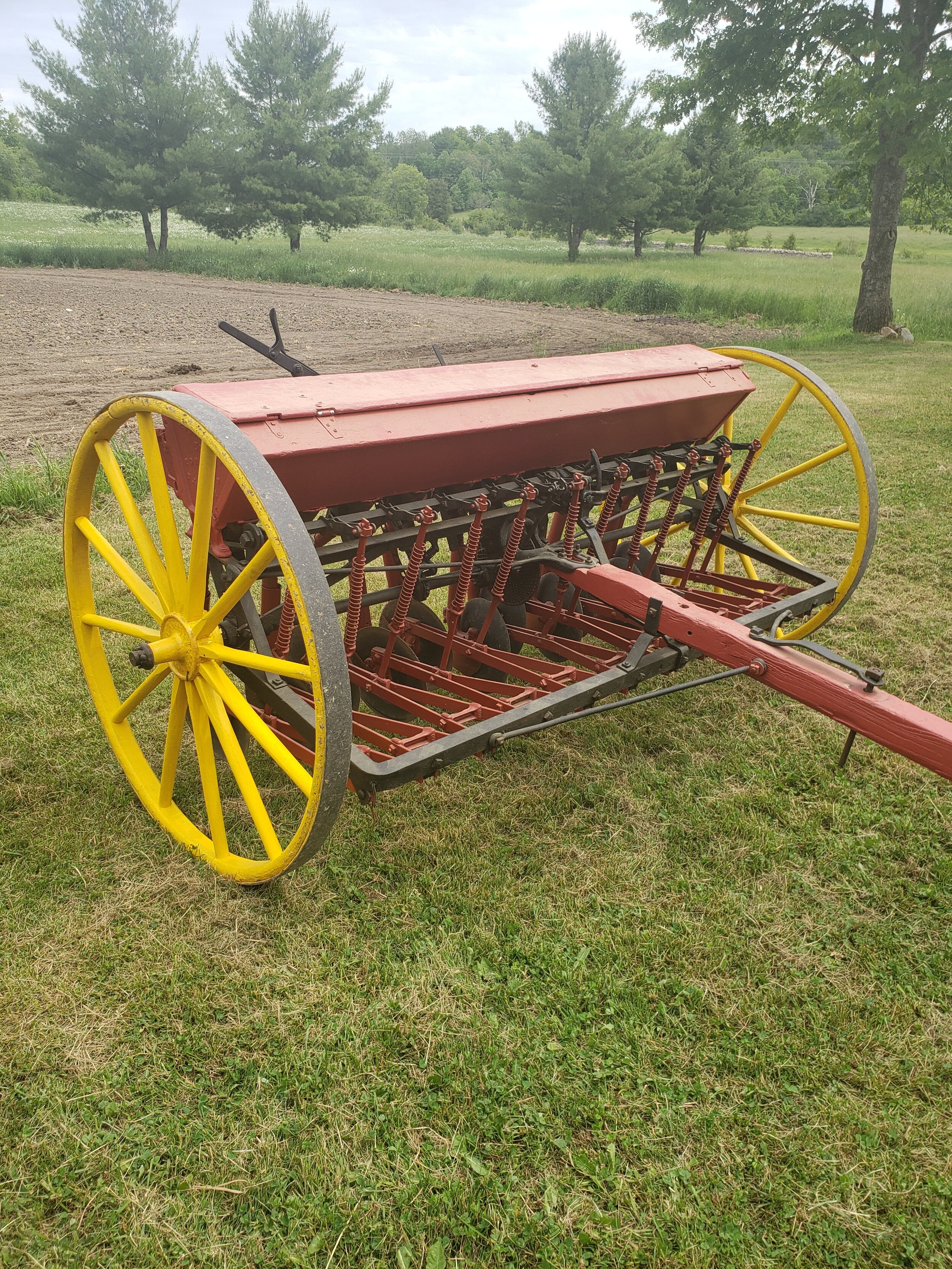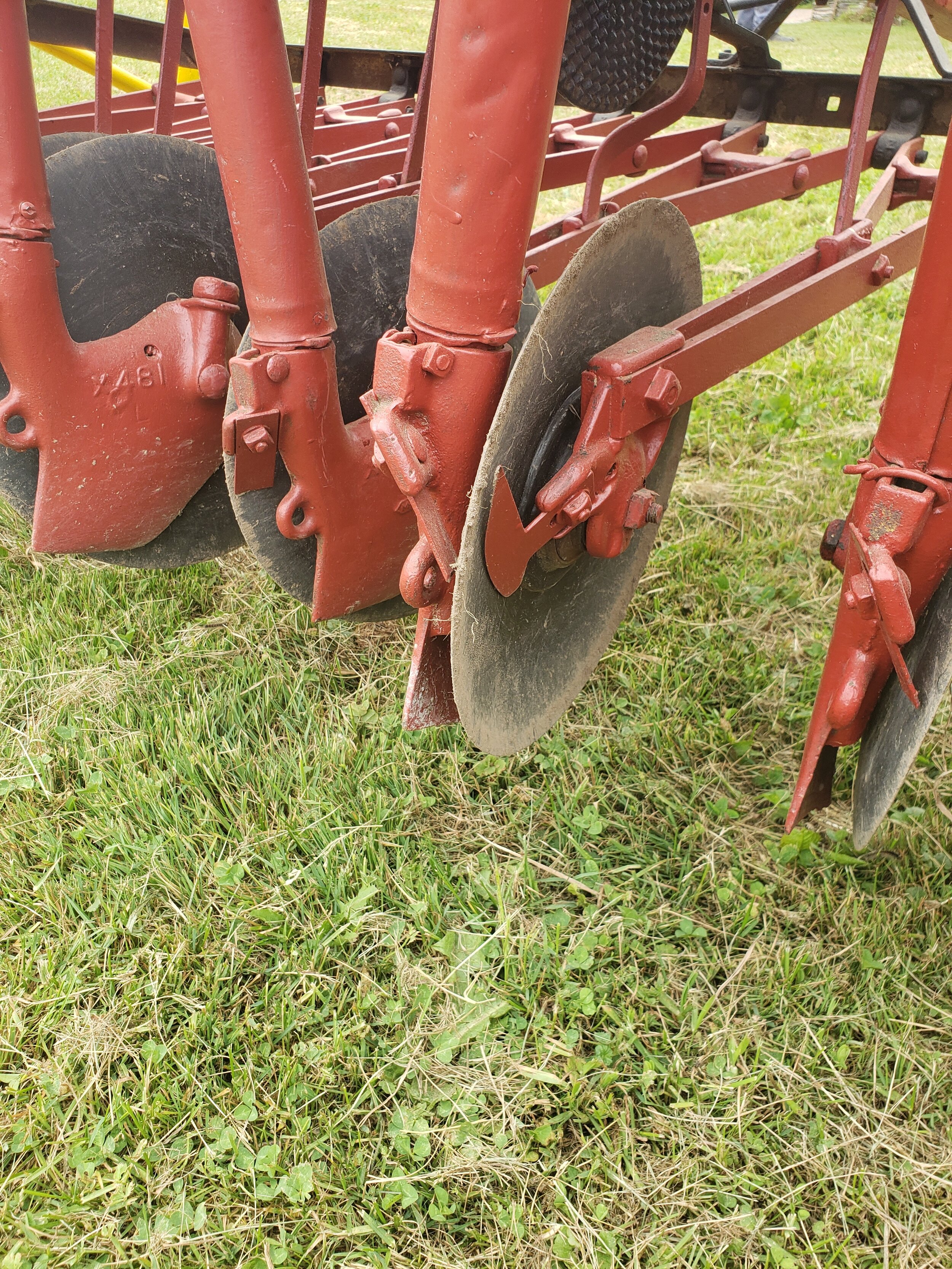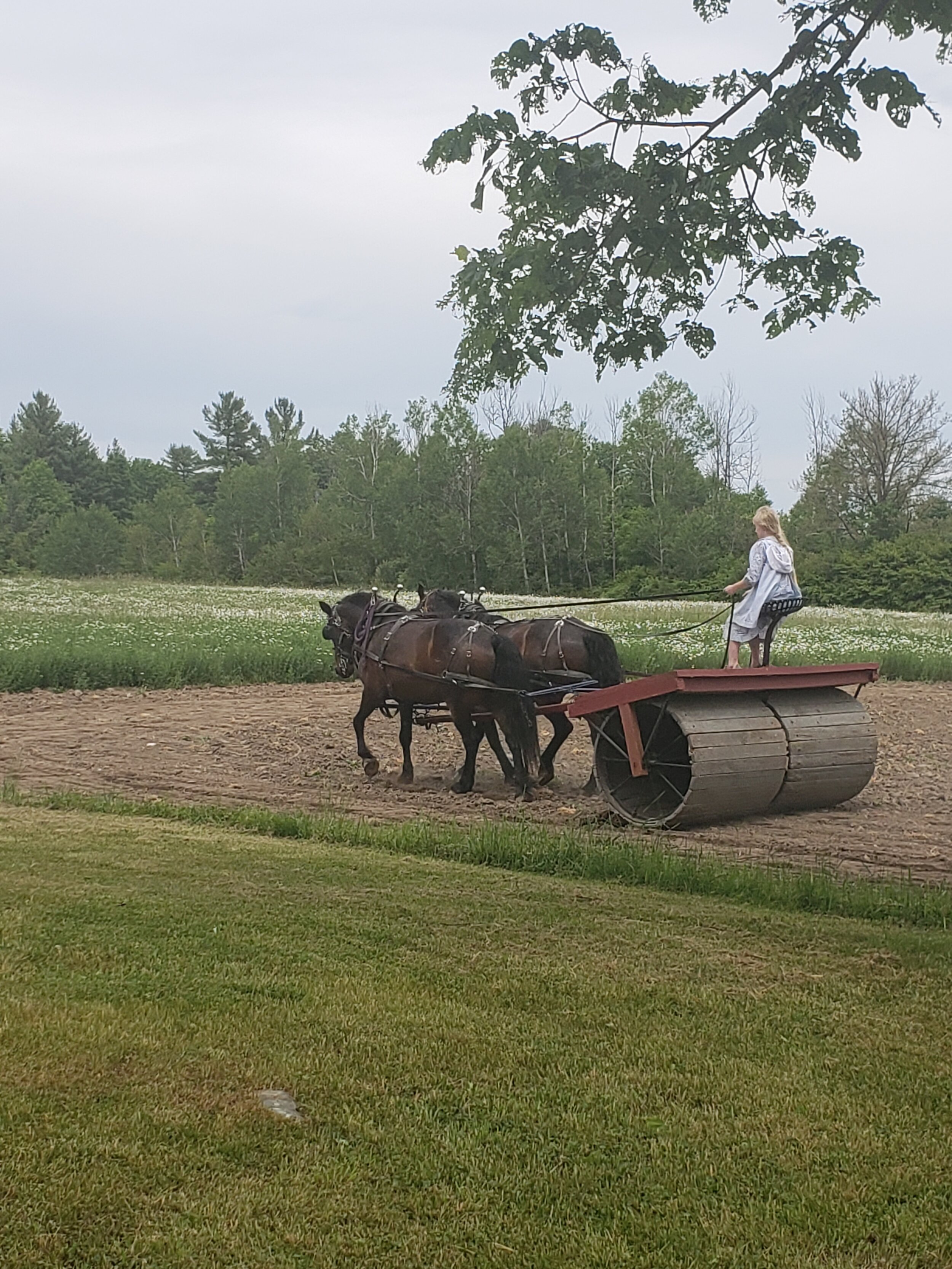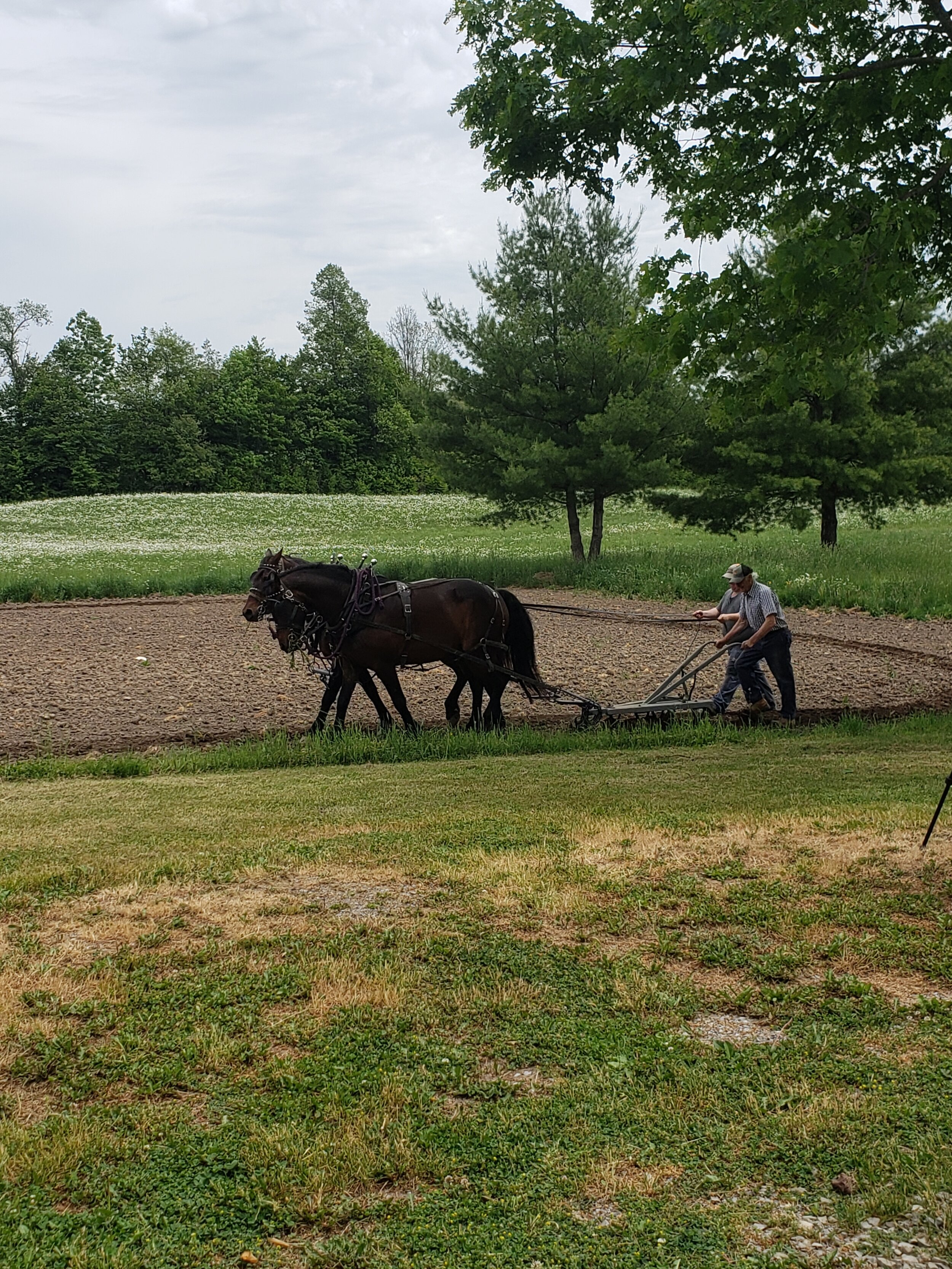Preparing the Fields
Agriculture/ AUGUST 11th, 2021
In 1800s Canada, a good fall harvest determined the settlers survival through the winter. A good harvest depended on a variety of factors such as; weather, wildlife interference, soil conditions, and the preparation work done to the field.
At the O’Hara homestead, we have a variety of working era-appropriate farm equipment. Because of this, we are able to have a better understanding of what farm work and labour looked like in the O'Hara's time. This past Sunday we hosted our annual Draft Horse Farm Day where there were many demonstrations involving our farm equipment as well as some additions from our dedicated volunteers.
The first step when preparing a field was plowing. This step occurred any time after the harvest, the sooner the better as plowing prevented soil erosion. Plowing the field also breaks up soil, buries old crop residue, and controls weed growth.
Any stones that were brought to the surface during the previous harvest and plowing would need to be removed. If they weren’t taken from the field, they could obstruct the growth of some plants, cause injury to the horses, or damage equipment. This chore was often given to the children as it was a tedious job and provided an opportunity for them to learn good work ethic. During this stage, the quality of the soil would also be assessed. Some crops changed the acidity and number of nutrients in the soil, so farmers would rotate their crops to accommodate their unique requirements for growth.
After that, harrowing would occur. This process would create a furrow for the seeds to be placed in. A furrow was a long trench created by the harrow. At O’Hara, we use a special “Harrows riding cart”. This type of harrow would allow the farmer to sit atop the piece of equipment instead of walking behind or beside it.
Once the field was completely done over by the harrow, the farmer would have a couple of options when it came to planting the seeds. Some crops required special techniques which came with their own equipment. For example, turnip and corn are planted by a different machine than other grains. The farmer could plant the seeds by hand, use handheld equipment, or use heavier equipment that could be pulled by a horse or team of horses. The seeder we use is a Massey Harris seed drill. It has different “settings” that change the width of the hole the seeds come out of, which in turn changes how many seeds are dispensed at once. This flexibility is convenient as it allows more than one type of seed to be used in the same machine.
The final step in preparing the field is to run over the freshly planted seeds with a land roller. The roller pushes soil onto the seeds and covers them. This process protects the seeds from wildlife and the elements while they germinate and begin to grow.
To see more pictures and learn more information about our farm equipment, click on the pictures in the gallery within this blog or visit our “Artifacts and Tools” page under “The Homestead” on our website.
𝓗𝓮𝓪𝓽𝓱𝓮𝓻 & 𝓜𝓲𝓪
